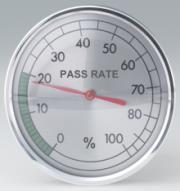An email alert from the DSA:
DSA to stop publishing questions used in theory tests
- Candidates need to understand theory
- End to memorising answers
- Unpublished questions used from 1 January 2012
The Driving Standards Agency is to stop publishing the multiple choice questions and answers used in theory tests, Road Safety Minister Mike Penning announced today.
This will help to ensure that new drivers learn the principles behind driving theory rather than just learning answers.
The move follows the introduction of independent driving into the driving test and the DSA’s decision to stop publishing test routes in October 2010, to make sure the test assesses a learner’s ability to drive and not their capacity to memorise routes.
Mike Penning said:
“The driving theory test should help to prepare drivers for real life on the road – good driving is not just about vehicle-handling skills, but also about having the knowledge and understanding of safe driving theory.
“No longer publishing these questions and answers will mean that successful candidates will have to understand the theory rather than simply memorising answers.
“I believe that this – along with the other changes we are making to the driving test regime – will lead to better drivers and safer roads.”
In September 2011 DSA will change the format of books and other learning materials available to help people prepare for theory tests. This will take place at the same time as more challenging case studies are introduced to car and motorcycle theory tests.
Then, from 1 January 2012, DSA will create theory tests using questions which will not be published.
Practice questions and answers, not used in theory tests, will still be available to help candidates with revision.
Other companies which publish products containing DSA theory test questions will also no longer have access to the questions used in the tests.
I’m not completely sure how I feel about this. I agree totally that candidates should actually know about road safety. I also don’t think that anyone could memorise all 1,000 questions (although some do try).
I have a pupil at the moment who can drive and has been doing for many years. He has got to take his theory test, and yesterday he was complaining about how some of the questions were “crap” and “wrong”. Two that seemed to get him particular annoyed (these were just “crap”) were the one about guide dogs for the deaf (burgundy jackets) and how far to depress the chest when delivering CPR.
He said he knows a few deaf people and in all his years has never – even once – seen a guide dog for the deaf (well, they’re called “hearing dogs”, but we all get the idea). And he asks why he needs to know the chest compression depth when he is just learning to drive (he’s done First Aid in his job, so knows the answer anyway).
I do get pupils who get a few questions wrong and we have to have a discussion about why. Some questions definitely are a little misleading – they’re the ones likely to send the self-proclaimed heroes of the special needs candidate incandescent with rage. The questions aren’t wrong, just very confusing to non-experts or people under pressure in the Theory Test Centre.
It will be interesting to see what happens when the change occurs. And I’ll have to make sure I don’t buy any more of those Driving Test Success DVDs in bulk… mind you, they’ll still be useful, I guess.
EDIT: The most recent DSA news update says the change comes into force from 23 January 2012.
Search terms used to find the blog:
The Theory Test is a load of bollocks
No it isn’t. This statement is exclusive to that group of people who fail it, and yet somehow think that they’re great drivers. If you don’t know the Highway Code, you are a very poor driver. And if you can’t pass the Theory Test, it’s because you don’t know the Highway Code!
The Hazard Perception Test (HPT) is a load of bollocks
No it isn’t. If you concentrated on practicing it instead of whinging about having to use a computer or even do a test, you’d pass it easily.
The HPT is NOT intended to be a substitute for real world hazard management. It just helps you learn to identify the kinds of things to look for in the early stages of learning to drive. It is very relevant to anyone under the age of 25-30, or who has never driven before – but if you’re older than that with road experience then you’ll just have to get used to the fact that you’re going to have to do it, so concentrate on passing it instead of moaning.
 The number of hits I’m getting based on this search term (since the introduction of independent driving on October 4th) is incredible!
The number of hits I’m getting based on this search term (since the introduction of independent driving on October 4th) is incredible! The
The  A few years ago I was driving through the Cotswolds. It was slightly misty, and at the time of year when the deer seem to go nuts during the rut. I think it was on the A429 or A424. I was heading North, and there was a Ford Transit, a Ford Ka, and then me driving along. All of a sudden, a herd of deer leapt out through a gap in a hedge – there must have been more than a dozen of them – and the Transit slammed into them at close to 60mph (he wasn’t speeding or anything).
A few years ago I was driving through the Cotswolds. It was slightly misty, and at the time of year when the deer seem to go nuts during the rut. I think it was on the A429 or A424. I was heading North, and there was a Ford Transit, a Ford Ka, and then me driving along. All of a sudden, a herd of deer leapt out through a gap in a hedge – there must have been more than a dozen of them – and the Transit slammed into them at close to 60mph (he wasn’t speeding or anything).